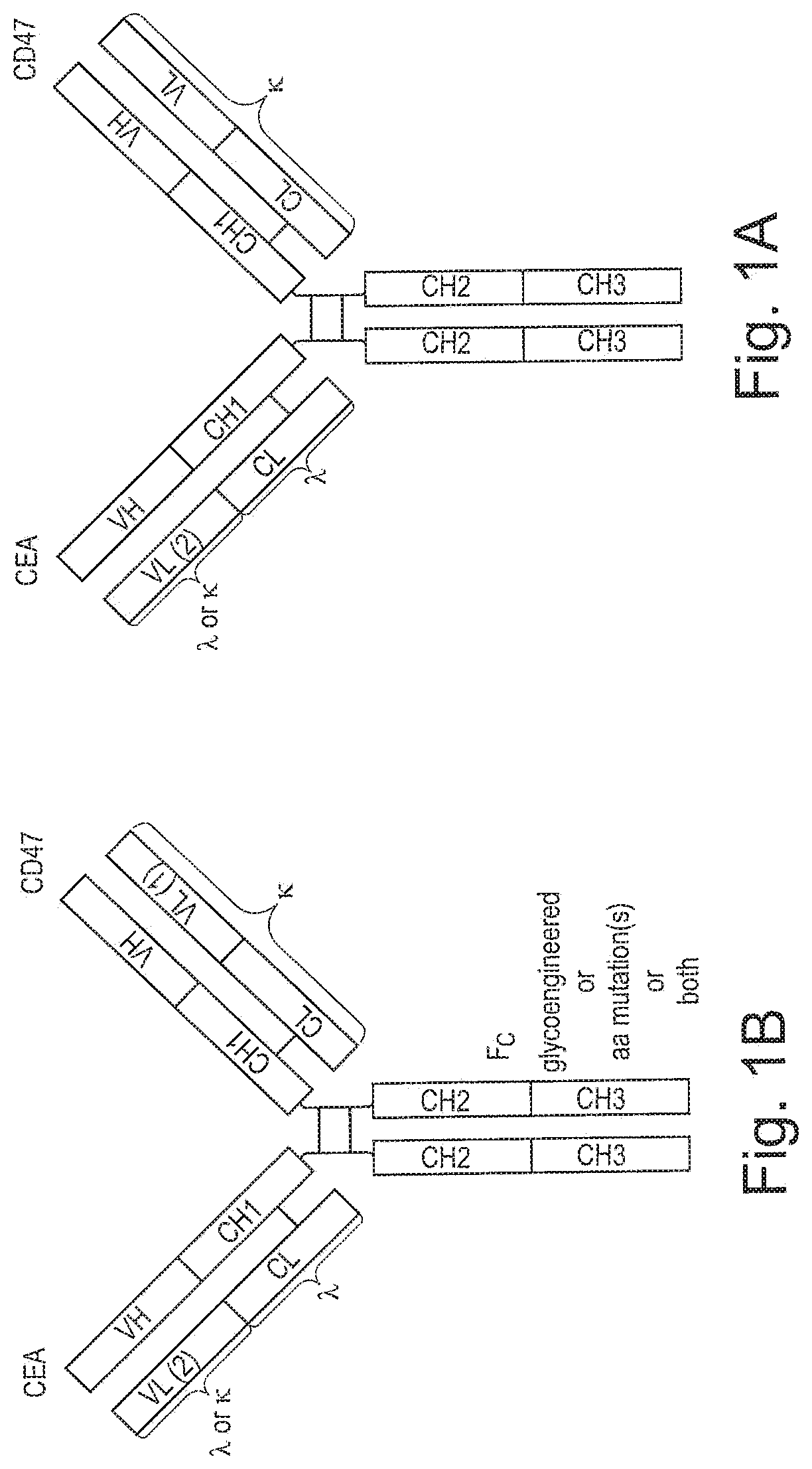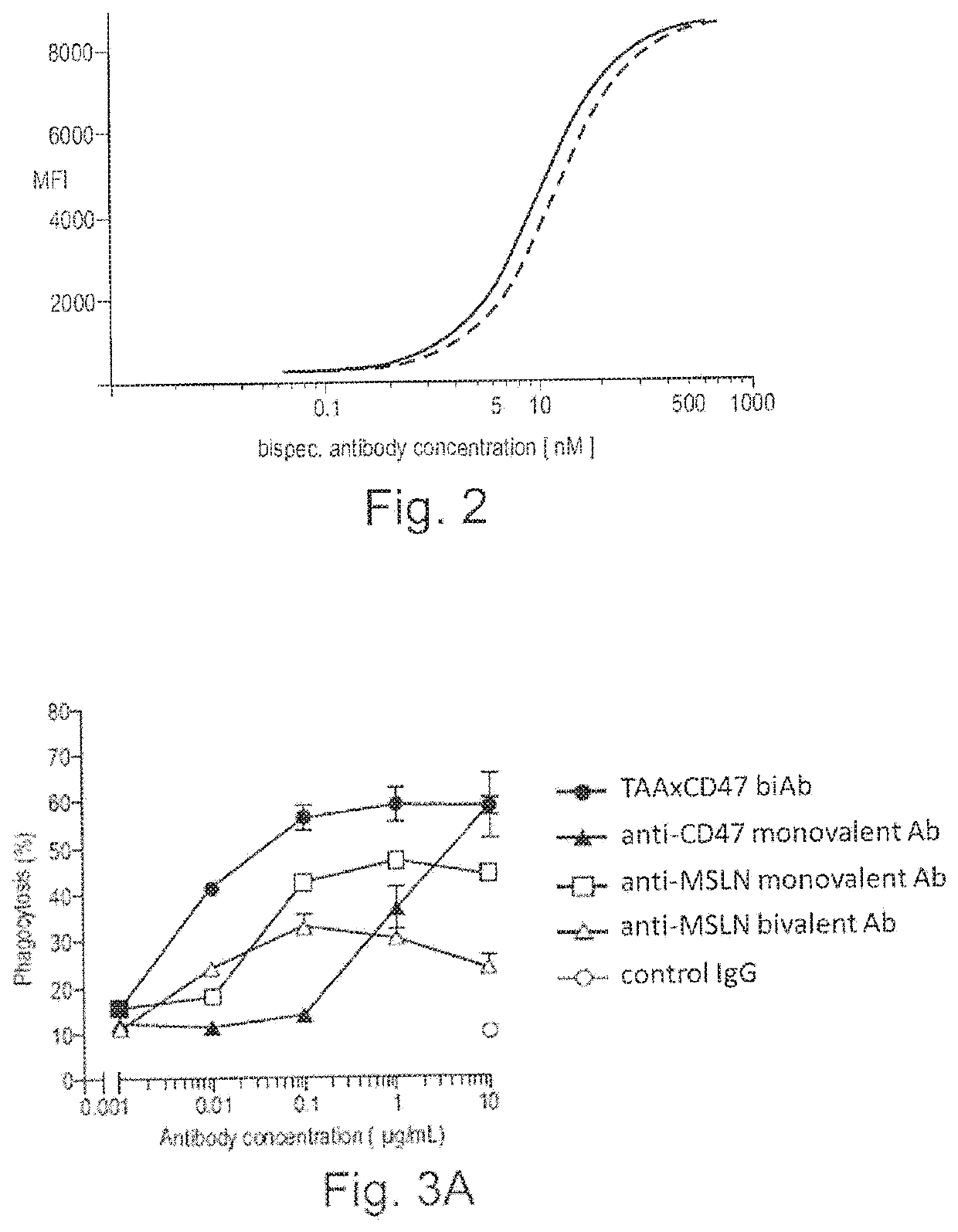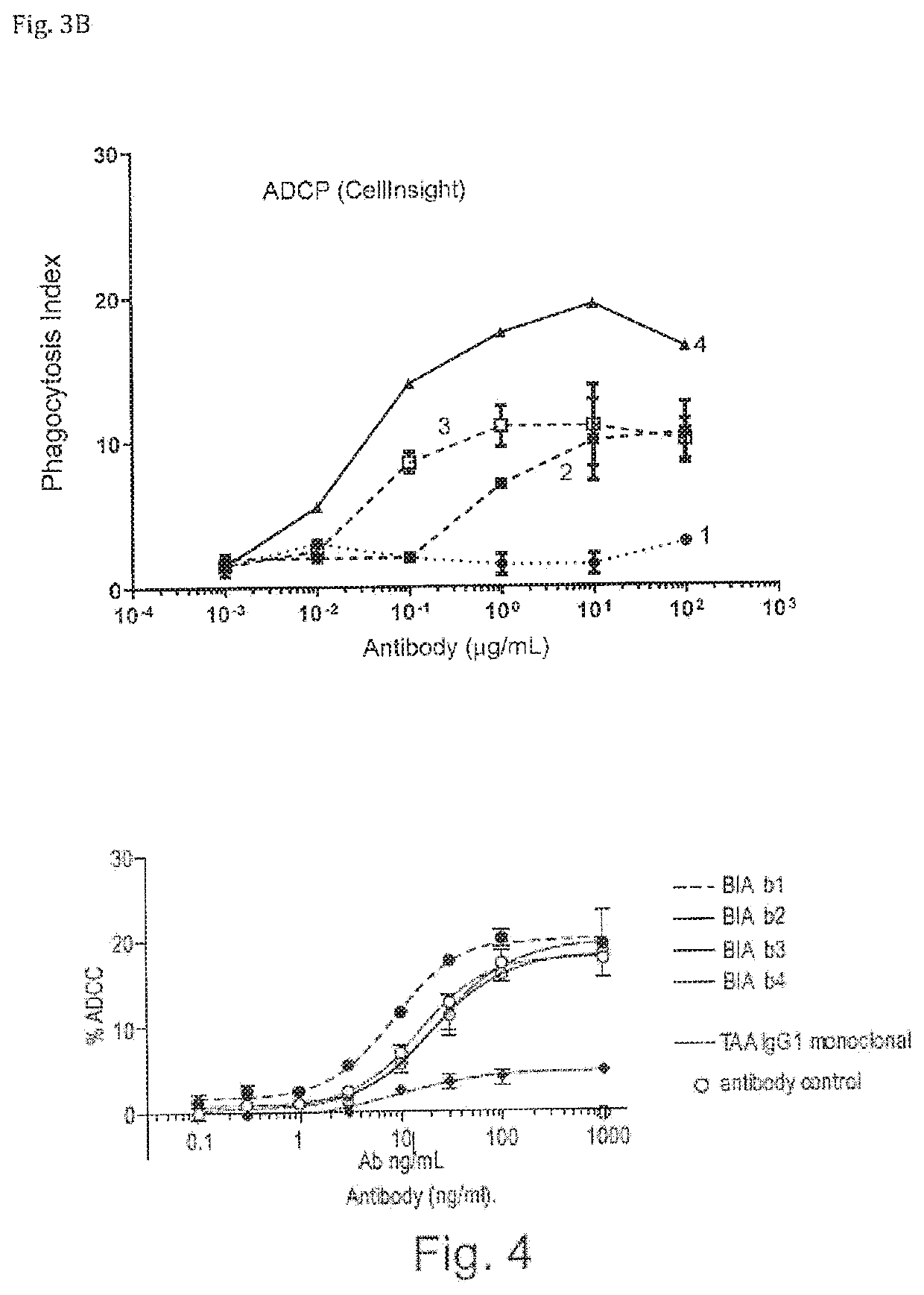Bispecific antibodies against ceacam5 and cd47
a technology of bispecific antibodies and ceacam, which is applied in the field of bispecific antibodies, can solve the problems of limited progress of drug therapy, decreased anti-cea antibody efficacy, and certain, but limited successes, and achieve the effect of reducing the concentration-dependent activity of phagocytosis
- Summary
- Abstract
- Description
- Claims
- Application Information
AI Technical Summary
Benefits of technology
Problems solved by technology
Method used
Image
Examples
example 1
Cloning, Expression and Purification of Human CD47
[0377]The sequence corresponding to the extracellular domain of human CD47 (hCD47), is amplified from human cDNA by polymerase chain reaction (PCR) using specific oligonucleotides. The amplification product is gel-purified and cloned into the pEAK8 mammalian expression vector (Edge Biosystems, Gaithersburg, Md.). The vector is further modified to introduce an Avitag™ (Avidity, Denver Colo.) and a hexa-histidine tag at the C-terminus allowing for single site biotinylation of the protein and purification by IMAC (Immobilized Metal Ion Affinity Chromatography), respectively. The constructs are verified by DNA sequencing.
Expression
[0378]The plasmid is then transfected into mammalian cells using a liposome-based transfection reagent such as Lipofectamine2000 (Thermofisher Scientific). The transfection step requires only small quantities of DNA and cells, typically 2×105 cells and 2 μg of plasmid DNA per well and the transfection ca...
example 2
Cloning, Expression and Purification of Human CEACAM Family Members Cloning
[0381]The sequence corresponding to the complete extracellular domain (ECD) and A3-B3 domains of CEACAM5 were synthesized by Eurofins and Twist Bioscience. These synthetic genes were subcloned into the pEAK8 mammalian expression vector (Edge Biosystems, Gaithersburg, Md.). The vectors were modified to introduce an Avitag™ (Avidity, Denver Colo.) and either a hexa-histidine tag, a human FC region or a mouse FC region at the C-terminus. Constructs were verified by DNA sequencing. Purification of recombinant soluble protein was carried out by IMAC (Immobilized Metal Ion Affinity Chromatography), FcXL or CaptureSelect™ IgG-Fc (ms) Affinity Matrix (Thermofisher Scientific).
[0382]Vectors encoding for the full-length version of human CEACAM 1, 3, 4, 5, 6, 7, 8, 18, 19, 20, 21 and cynomolgus CEACAM5 were also generated for expression at the cell surface of PEAK and / or CHO cells. The soluble, full-length human CEACAM1...
example 3
Phage Display Selection of CEACAM5 Fvs Using Human scFv Libraries Containing Fixed Variable Heavy Domain
[0384]General procedures for construction and handling of human scFv libraries displayed on M13 bacteriophage are described in Vaughan et al., (Nat. Biotech. 1996, 14:309-314), hereby incorporated by reference in its entirety. The libraries for selection and screening encode scFv that all share the same VH domain and are solely diversified in the VL domain. Methods for the generation of fixed VH libraries and their use for the identification and assembly of bispecific antibodies are described in US 2012 / 0184716 and WO 2012 / 023053, each of which is hereby incorporated by reference in its entirety. The procedures to identify scFv binding to human CECAM5 are described below.
Protein Selections
[0385]Aliquots of scFv phage libraries (1012 Pfu) are blocked with PBS containing 3% (w / v) skimmed milk for one hour at room temperature on a rotary mixer. Blocked phage is deselected on streptav...
PUM
| Property | Measurement | Unit |
|---|---|---|
| concentrations | aaaaa | aaaaa |
| concentrations | aaaaa | aaaaa |
| concentrations | aaaaa | aaaaa |
Abstract
Description
Claims
Application Information
 Login to View More
Login to View More - R&D
- Intellectual Property
- Life Sciences
- Materials
- Tech Scout
- Unparalleled Data Quality
- Higher Quality Content
- 60% Fewer Hallucinations
Browse by: Latest US Patents, China's latest patents, Technical Efficacy Thesaurus, Application Domain, Technology Topic, Popular Technical Reports.
© 2025 PatSnap. All rights reserved.Legal|Privacy policy|Modern Slavery Act Transparency Statement|Sitemap|About US| Contact US: help@patsnap.com



